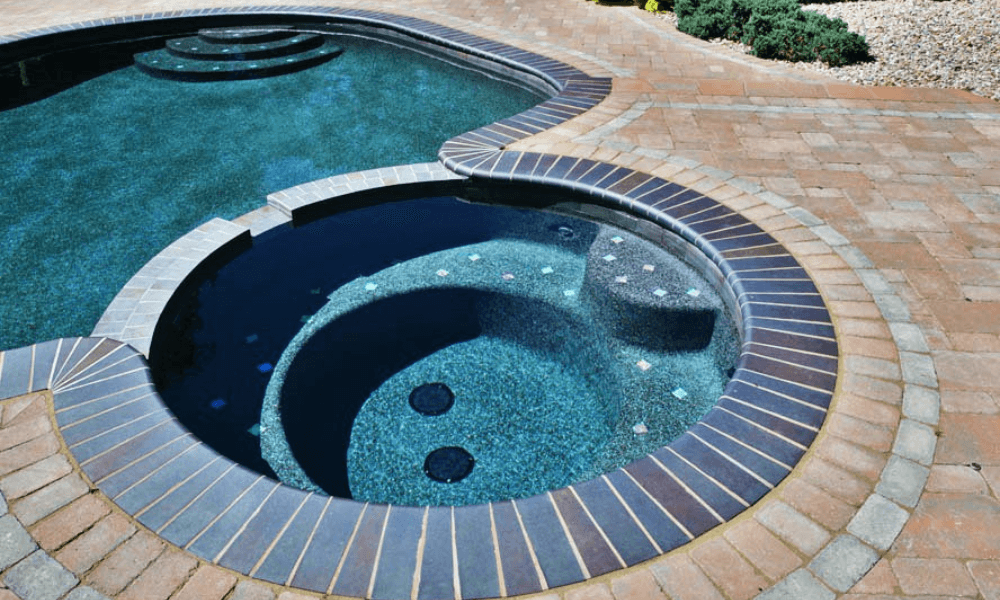Pros and Cons of an Attached Spa
Offering a way to achieve deep relaxation in your own backyard, a spa or hot tub is a wonderful enhancement to your pool area. If you’re considering adding one to your property, one of the key decisions you’ll face is whether to integrate the spa seamlessly with your existing pool or opt for a freestanding structure. While your decision may be influenced by factors such as space limitations, here are a few pros and cons of an attached spa:
Advantages of an attached spa
- Streamlined maintenance. An attached spa will likely share heating and filtration systems with your inground pool, which can help streamline and simplify the maintenance process. If you do choose an attached spa, we’d recommend a gas-fired heater rather than a heat pump. This option can heat both the pool and spa much more quickly, thereby facilitating spontaneous dips in the spa even on chilly evenings.
- Aesthetic appeal. Your backyard oasis should be a visual delight, and an attached spa enhances the overall aesthetic. Integrating it with your pool creates a harmonious visual flow, thereby elevating the appeal of your outdoor space. Detached hot tubs, on the other hand, can create a more disjointed look.
- Customization options. Unlike pre-manufactured standalone spas, attached spas offer greater opportunities to express your unique style and preferences. From the shape to the finish to details like waterline tiles, you’ll have the freedom to customize an attached spa to your liking.
- Longer swimming season. For many pool owners in the Northeast, swimming season is confined to the late spring through early fall. With an attached spa, however, you can easily transition between the warm waters of the spa and the refreshing pool, which can help extend the season during which you can enjoy both. With a detached hot tub, you may be less inclined to head back to the pool after using the spa during cooler weather.
Potential drawbacks of an attached spa
- As frigid temperatures approach, winterizing your pool is essential for preventing damage. Since an attached spa shares the same heating and filtration systems, you will most likely need to close and winterize it as well—unlike a detached hot tub, which is factory made to be used year-round. While the swimming season can be maximized by burying the plumbing lines deeper in the ground and installing the filtration and heating equipment indoors, many of our customers do opt to close both their pool and attached spa between approximately October and April.
- Space limitations. While attached spas can save space in certain scenarios, they may not be feasible for all backyards. Depending on your property’s size and layout, a detached spa might offer greater design flexibility. It’s important to work with an experienced pool design professional, such as the team at Aqua Pool & Patio, to assess your space requirements and limitations before making a decision.
- Higher installation and maintenance costs. Due to the complexity of the plumbing, filtration, and heating systems involved with an attached spa, the costs associated with installation and maintenance may be higher than with standalone options.
While the choice between an attached or detached spa will ultimately depend on your individual preferences and specific backyard layout, many homeowners are drawn to the convenience, aesthetics, and customization options of an attached spa. Whether you already have an inground pool or you’re thinking of building one, the team at Aqua Pool & Patio can help you add a luxurious attached spa that suits your needs and vision! Call us today at (860) 623-9886 to get started.




